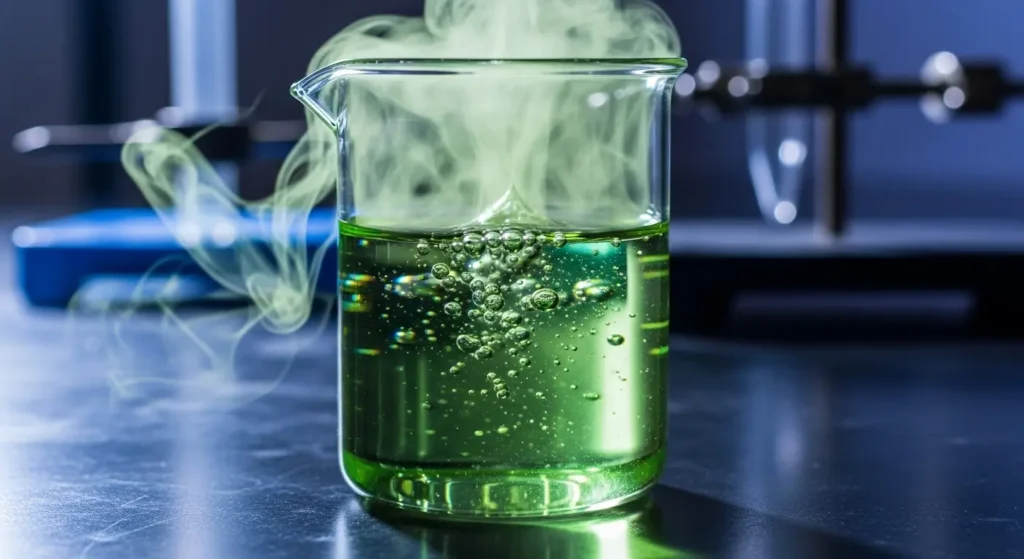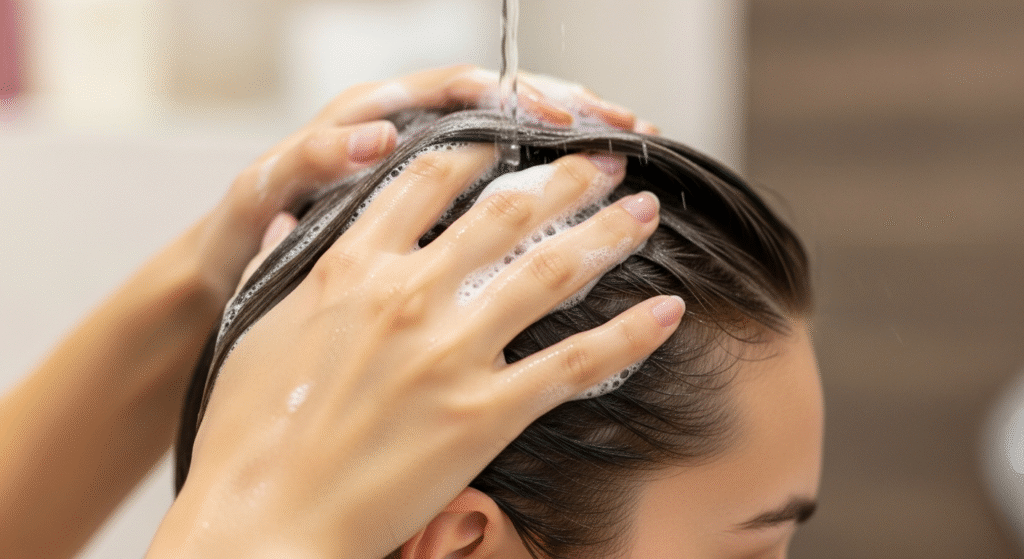If you’ve noticed dryness, breakage, or thinning after swimming, you might wonder whether chlorine and hair loss are connected. In this article, we’ll clarify what science says, explain how chlorine actually affects your hair, and share proven prevention strategies.
You’ll also learn expert tips, recovery routines, and when to seek help if pool exposure worsens your hair health. Backed by dermatologists and real-world cases, this guide will help you enjoy swimming without compromising strong, healthy hair.
Understanding the Myth — Does Chlorine Cause Hair Loss?

What Science & Experts Say
The good news: chlorine itself does not directly cause permanent hair loss. Research shows no evidence that pool chlorine miniaturizes follicles or triggers pattern baldness. Dermatologists confirm that chlorine mainly affects the hair shaft, not the root.
For example, a study comparing professional swimmers with non-swimmers found no higher risk of baldness among swimmers. Instead, the main impact was dryness, discoloration, and breakage.
When Can Chlorine Contribute Indirectly?
While chlorine doesn’t cause baldness, certain conditions can make it indirectly harmful:
- High chlorine exposure: In poorly maintained pools or regions with heavily chlorinated tap water, irritation may damage the scalp.
- Existing scalp issues: Psoriasis, eczema, or seborrheic dermatitis can worsen with chlorine, leading to increased shedding.
- Rare cases: Prolonged, unsafe levels of chlorine have been linked to scarring alopecia in extreme scenarios.
In short, chlorine weakens hair health but doesn’t cause genetic hair loss.
How Chlorine Really Affects Hair Health
Dryness, Porosity & Breakage
Chlorine strips the natural sebum from your hair, leaving strands porous and fragile. This leads to:
- Split ends
- Increased tangling
- Breakage that mimics hair loss
Color Changes & Brassy Tones
Light-colored or chemically treated hair can take on greenish or brassy hues due to chlorine binding with copper and other metals in the water.
Special Risk for Chemically Treated or Fine Hair
People with dyed, bleached, relaxed, or thin hair are more vulnerable. Their hair cuticles are already compromised, so chlorine accelerates dryness and breakage.
Prevention & Protection Strategies
Protecting hair from chlorine is simple with the right routine.
Pre-Swim Habits
- Wet your hair with clean water first – saturated hair absorbs less chlorine.
- Apply a protective barrier – coconut oil, olive oil, or leave-in conditioner forms a shield.
Swim Caps & Protective Hairstyles
- Wear a silicone swim cap for maximum protection.
- Braid or bun your hair under the cap to reduce friction.
Post-Swim Recovery
- Rinse hair immediately with fresh water.
- Use a clarifying shampoo or a vitamin C rinse to neutralize chlorine.
- Follow with a deep conditioner to restore moisture.
Weekly Maintenance
- Use a hydrating hair mask once or twice a week.
- Trim split ends regularly.
- Rotate between moisturizing and clarifying products.
Real-Life Examples & Expert Tips
Olympians’ Routines for “Swimmer Hair”
Professional swimmers often use pre-swim oils, leave-in products, and clarifying shampoos daily. These habits allow them to train without severe long-term damage.
Vitamin C Hack That Went Viral
A pool operator reported that a vitamin C rinse restored softness and shine after chlorine damage, preventing nearly 8 inches of hair from breaking off.
Trichologist Insight
Trichologists highlight the importance of restoring the scalp microbiome after frequent chlorine exposure. Balancing scalp oils and pH with mild shampoos can prevent shedding and irritation.
Visual Recovery Timeline & Protective Routine
Recovery after chlorine exposure varies by hair type and damage severity.
- Day 1–3: Rinse, clarify, and hydrate. Hair feels softer within days.
- Week 1–2: Regular deep conditioning reduces tangling and breakage.
- Week 3+: With consistent care, noticeable improvement in shine, strength, and manageability.

When to Seek Expert Help
Signs You Need a Professional Evaluation
Patchy thinning or slow regrowth
Redness, itching, or persistent scalp irritation
Unusual levels of hair shedding after swimming
FAQs About Chlorine and Hair Loss
1. Can chlorine permanently damage hair follicles?
Not under normal swimming conditions. Only extremely high, unsafe levels could harm follicles.
2. How often can I swim without impacting my hair health?
With proper pre- and post-swim care, swimming several times a week is safe.
3. Is hair breakage the same as hair loss?
No. Breakage occurs along the shaft, while hair loss involves shedding from the root. Chlorine causes breakage, not balding.
4. What are the best home remedies for chlorine buildup?
A vitamin C rinse, baking soda solution, or clarifying shampoo removes buildup effectively.
5. When should I see a specialist?
If you notice excessive shedding, scalp irritation, or thinning beyond normal breakage, consult a dermatologist or trichologist.
Conclusion
Chlorine doesn’t cause permanent baldness, but it weakens hair, leading to dryness, breakage, and color changes. With simple protective steps, you can enjoy swimming without risking your hair’s health. Remember: prevention, timely care, and expert guidance are your best allies.
Worried about chlorine’s impact on your hair? Don’t let dryness or thinning hold you back. Book a consultation with Dr. Rana Irfan in Islamabad today and get personalized solutions to protect, restore, and strengthen your hair.
